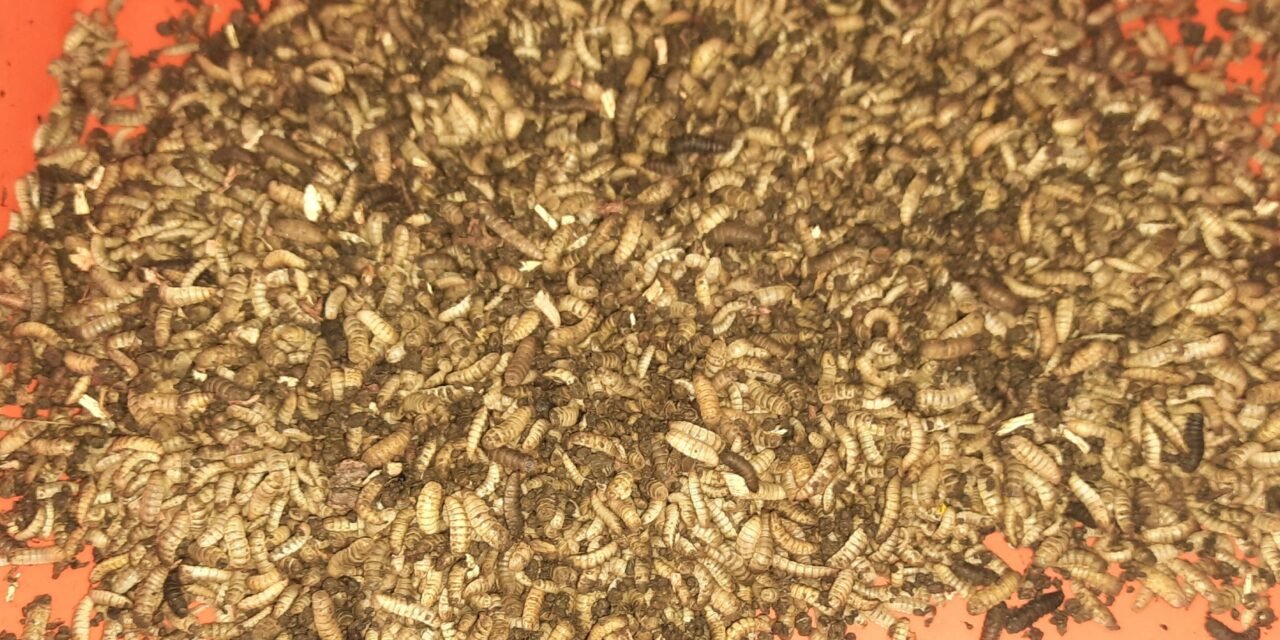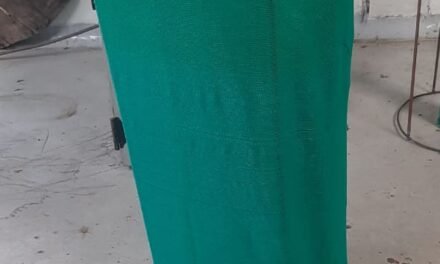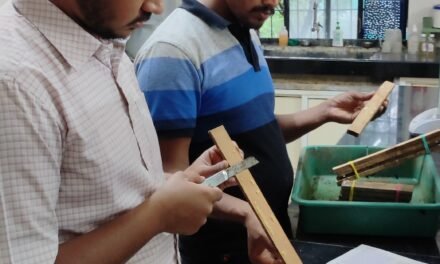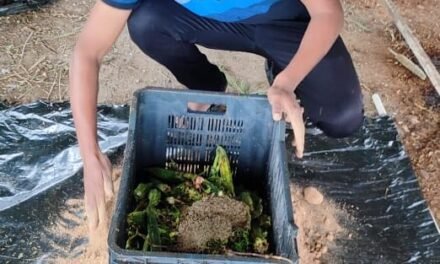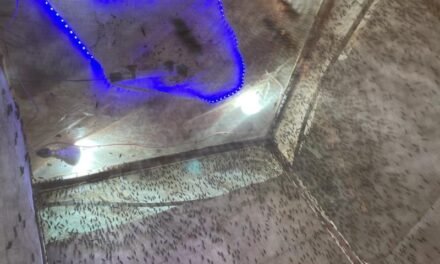- Objective – To check the growth rate of BSF on Azolla.
- Introduction –
The Black Soldier Fly, Hermetia illucens, is of the dipteran family Stratiomyidae. The larvae and adults are considered neither pests nor vectors. Instead, black soldier fly larvae play a similar role to that of redworm as essential decomposers in breaking down organic substrates and returning nutrients to the soil. The larvae have voracious appetites and can be used for composting household food scrap and agriculture waste products.
Additionally, black soldier fly larvae (BSFL) are an alternative source of protein for aquaculture, animal feed, pet food and human nutrition.
- Life cycle –
An adult female lays between 206 and 639 eggs at a time. These eggs are typically deposited in crevices or on surfaces above or adjacent to decaying matter such as manure or compost and hatch in about 4 days. Freshly emerged larvae are 1.0 millimetre (0.04 in), being able to reach a length of 25 millimetres (1 in) and weight of 0.10 to 0.22 grams (1.5 to 3.4 gr) by the end of larval stage. The larvae are able to feed on a wide variety of organic matter, adapting to diets with different nutrient content. The larval stage lasts from 18 to 36 days, depending on the food substrates provided to the larvae, of which the post feeding (prepupal) stage lasts around 7 days. The length of larval stage can be delayed by months due to low temperature or lack of food. The pupal stage lasts from 1 to 2 weeks. Adults can live typically 47 to 73 days when provided with water and food, such as sugar in captivity or nectar in the wild, or survive for about 8 to 10 days on fat reserves gathered during larval stage when water is provided.
- Material required –
1.Tray
2.larva
3.azolla
4.chiken feed
5.fish feed
6. Rice
- Seeds – Eggs of BSF – 6 gm
- Setup –
- Hatching of eggs –
- One tray was taken. In that tray 2 lit water and 600 gm of feed was taken for hatching of eggs. After that 6 gm of eggs were added on top of the tray using a sieve. After 5 days (5 DOL) the larva was taken for the experiment.
- We observed that 6 gm of eggs became 492 gm of (5DOL) average 96186 number of larvae.
- For counting the average number of larvae we took 3 samples of 2 gm of larva and counted them in a plate manually.
| Sample no. | 1 | 2 | 3 |
| Total count of larva | 408 | 404 | 361 |
= 408 + 404+361/ 3
= 1173/3
So, the average per 2 gm = 391 no. of larvae
- Experiment setup –
- For the experiment we took 12 trays of the same dimension. 12 trays were divided into 4 sections.
| Sr.no | Tray | content |
| 1 | C1C2C3 | 100% CHICKEN FEED100% CHICKEN FEED100% CHICKEN FEED |
| 2 | R1R2R3 | 100% RICE100% RICE100% RICE |
| 3 | RA1RA2RA3 | 50% RICE+50%AZOLLA50% RICE+50%AZOLLA50% RICE+50%AZOLLA |
| 4 | A1A2A3 | 100% AZOLLA100% AZOLLA100% AZOLLA |
- Setup for feeding –
For 1st day feeding (date – 24/06/2022)
| Substrate | Dry weight | Water weight | Total weight |
| 100% chicken feed | 1066 gm | 2000 gm | 3066 gm |
| 100% Rice | 886 gm | 1770 gm | 2566gm |
| 50% Rice and 50% Azolla | 443 + 666 gm | 883 gm | 1992 gm |
| 100% azolla | – | – | 960 |
| Setup date | Weight of BSF | tray | Weight (gm) |
24/06/2022 | 41 gm41gm41gm | C1 | 1066 CF + 2000 Water |
| C2 | 1066 CF + 2000 Water | ||
| C3 | 1066 CF + 2000 Water | ||
24/06/2022 | 41gm | R1 | 886 Rice + 1770 Water |
| 41gm | R2 | 886 Rice + 1770 Water | |
| 41gm | R3 | 886 Rice + 1770 Water | |
24/06/2022 | 41gm | RA1 | 443 Rice + 666 Azolla + 1050 Water |
| 41gm | RA2 | 443 Rice + 666 Azolla + 1050 Water | |
| 41gm | RA3 | 443 Rice + 666 Azolla + 1050 Water | |
24/06/2022 | 41gm | A1 | 970 Azolla |
| 41gm | A2 | 970 Azolla | |
| 41gm | A3 | 970 Azolla |
| Sr.no | Tray | content |
| 1 | C1C2C3 | 100% CHICKEN FEED100% CHICKEN FEED100% CHICKEN FEED |
| 2 | R1R2R3 | 100% RICE100% RICE100% RICE |
| 3 | RA1RA2RA3 | 50% RICE+50%AZOLLA50% RICE+50%AZOLLA50% RICE+50%AZOLLA |
| 4 | A1A2A3 | 100% AZOLLA100% AZOLLA100% AZOLLA |
- Setup for feeding –
For 1st day feeding (date – 24/06/2022)
| Substrate | Dry weight | Water weight | Total weight |
| 100% chicken feed | 1066 gm | 2000 gm | 3066 gm |
| 100% Rice | 886 gm | 1770 gm | 2566gm |
| 50% Rice and 50% Azolla | 443 + 666 gm | 883 gm | 1992 gm |
| 100% azolla | – | – | 960 |
| Setup date | Weight of BSF | tray | Weight (gm) |
24/06/2022 | 41 gm41gm41gm | C1 | 1066 CF + 2000 Water |
| C2 | 1066 CF + 2000 Water | ||
| C3 | 1066 CF + 2000 Water | ||
24/06/2022 | 41gm | R1 | 886 Rice + 1770 Water |
| 41gm | R2 | 886 Rice + 1770 Water | |
| 41gm | R3 | 886 Rice + 1770 Water | |
24/06/2022 | 41gm | RA1 | 443 Rice + 666 Azolla + 1050 Water |
| 41gm | RA2 | 443 Rice + 666 Azolla + 1050 Water | |
| 41gm | RA3 | 443 Rice + 666 Azolla + 1050 Water | |
24/06/2022 | 41gm | A1 | 970 Azolla |
| 41gm | A2 | 970 Azolla | |
| 41gm | A3 | 970 Azolla |
For 7th day feeding
| Setup date | Weight of BSF | tray | Weight (gm) |
01/07/2022 | 41 gm41gm41gm | C1 | 1066 CF + 2000 Water |
| C2 | 1066 CF + 2000 Water | ||
| C3 | 1066 CF + 2000 Water | ||
01/07/2022 | 41gm | R1 | 886 Rice + 1770 Water |
| 41gm | R2 | 886 Rice + 1770 Water | |
| 41gm | R3 | 886 Rice + 1770 Water | |
01/07/2022 | 41gm | RA1 | 443 Rice + 750 Azolla + 1050 Water |
| 41gm | RA2 | 443 Rice + 750 Azolla + 1050 Water | |
| 41gm | RA3 | 443 Rice + 750Azolla + 1050 Water | |
01/07/2022 | 41gm | A1 | 1500 Azolla |
| 41gm | A2 | 1500 Azolla | |
| 41gm | A3 | 1500 Azolla |
9/07/2022 (50% rice + azolla)
| Tray1 | Tray 2 | Tray 3 | ||
| Coco Peat(gm) | 350 | 350 | 450 | |
| Compost remaining(gm) | 900 | 845 | 760 | |
| No. larva | 4228 | 6860 | 8925 | |
| Wt. of larva(gm) | 590 | 700 | 700 | |
| Avg. Wt. | 0.114 gm | |||
| Water in compost | 60% | 60% | 56% |
9/07/2022
new setup
Total 2kg larva harvested from 50% azolla and 50% rice as a feed after 14 days.
Total 1200 gm feed was put in two separate trays, with double the water of its chicken feed and each tray contained 1kg larva.
25/07/2022
Two kg larva kept for 10-15 days for prepupa stage
In prepupa stage all larva get converted after 15 days , from all we collected total 17 gm eggs BSF larva.
This eggs used for future cycles.
3/08/2022
Conclusion – From this set up we got maximum larva in 50% azolla And 50% rice

